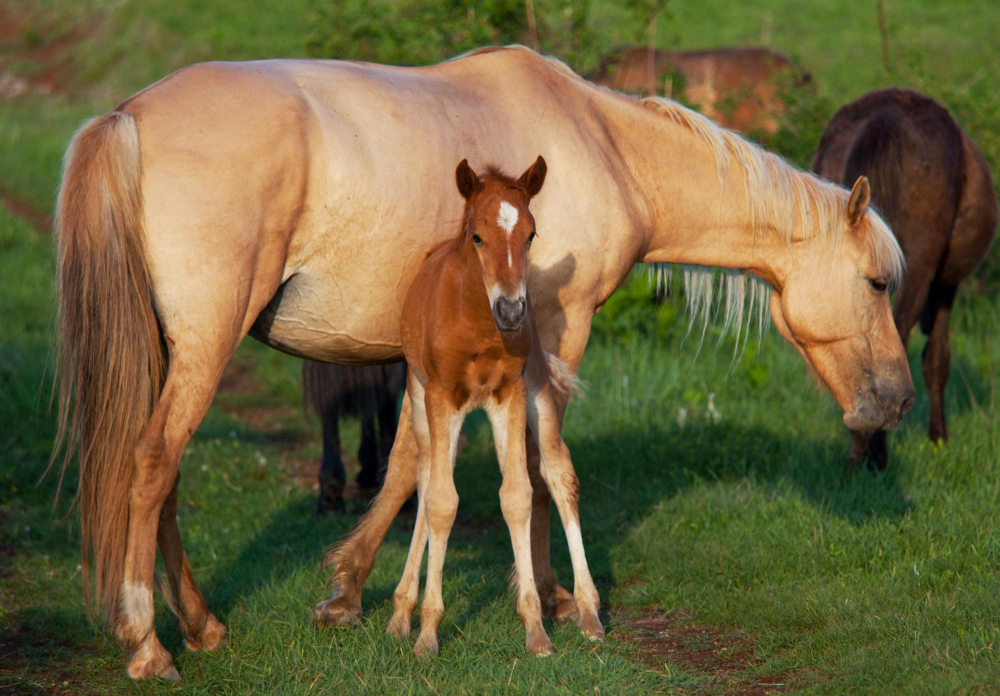Horse Color Calculator Online
Unlock the future coat color of your foal with our advanced Equine Coat Color Calculator, designed to predict stunning possibilities based on genetic details from both the Sire and Dam. Switch effortlessly between a Basic , Advanced or Educational Mode to explore the full range of equine coat color genetics and get accurate, personalized results.
An Introduction to the Horse Calculator
The Advanced Horse Coat Color Calculator is a powerful tool designed to help horse breeders, enthusiasts, and students predict the potential coat colors of foals based on the genetic makeup of the sire (father) and dam (mother). This article will guide you through the calculator’s functionality, explain each genetic input, and provide tips on how to best utilize this tool for your breeding program or educational purposes.

The calculator uses the principles of equine genetics to determine the possible coat colors of offspring. It takes into account various genes that influence horse coat color and calculates the probabilities of different color outcomes based on the genetic information provided for both parents.
🐎 Major Update: Advanced Foal Coat Color Calculator
We've completely upgraded our Horse Coat Color Calculator with professional genetics features for breeders, students, and educators.
Key Features of our Equine Color Predictor
Following are the key features of our Equine Coat Color Calculator tool that makes it unique from other tools.

Comprehensive Gene Selection
The calculator includes 12 different genetic factors that influence coat color, ranging from base colors to complex pattern genes. This extensive selection allows for a more accurate representation of the genetic diversity found in horses and provides users with a thorough understanding of the potential outcomes.

Probability Calculation based on Gene Info
It provides percentage probabilities for each possible coat color outcome, giving users a clear understanding of the likelihood of specific colors. This feature is particularly useful for breeders who are aiming for certain coat colors or patterns in their breeding programs.

Visual Representation of All possible Colors
Results are displayed in both a pie chart and individual color cards for easy interpretation. The pie chart offers a quick overview of the probability distribution, while the color cards provide detailed information about each potential outcome, including an image representation of the coat color.

Simple and Advanced Modes
Users can toggle between a simplified version and a more detailed genetic input form. The simple mode is perfect for beginners or those interested in basic color predictions, while the advanced mode allows experienced breeders and geneticists to input more specific genetic information for more precise results.

Calculation History Tab
The tool keeps track of recent calculations for easy reference. This feature allows users to compare different breeding combinations without having to re-enter the genetic information, saving time and facilitating more efficient decision-making in breeding programs.

User-Friendly Interface
The calculator boasts an intuitive design that makes it accessible to users with varying levels of genetic knowledge. Clear labels, dropdown menus, and tooltips guide users through the input process, ensuring accurate data entry. Moreover, If any of the input field is uncertain, users are briefed on each item in detailed in the following section.
How to Use the Calculator Effectively
To get the most out of this Equine Coat Color Calculator, follow these tips:
1. Know Your Horses
Gather as much genetic information as possible about the sire and dam. This may require genetic testing or inference from pedigree and phenotype.
2. Start Simple
If you’re new to horse color genetics, begin with the simple calculator mode, which focuses on the most influential genes.
3. Explore Combinations
Use the random parents feature to discover interesting color combinations you might not have considered.
4. Understand Probabilities
Remember that the calculator provides probabilities, not guarantees. Even a low probability color can occur in a real breeding scenario.
5. Use the History Feature
Keep track of different breeding combinations by referring to the calculation history.
6. Consider Gene Interactions
Some genes interact with others in complex ways. For example, the cream gene on a chestnut base produces a palomino, while on a black base it creates a buckskin.
7. Educate Yourself
Use the calculator as a learning tool. Experiment with different gene combinations to understand how they influence coat color.
Understading the Genetics of Equine Coats
Understanding the genetics behind equine coat colors is key to predicting your foal’s future appearance. The coat color of a horse is determined by a combination of genetic factors inherited from both the Sire (father) and the Dam (mother). These factors involve several genes, each influencing different aspects of the coat’s color and pattern.
Key Equine Genetic Factors:
Genetic factors that are involved in shaping the color of the foal are large in number, but the most important of them are explained in the following to develop your basic understanding.
Base Coat Color Genes:
- The two primary base coat colors in horses are black and red.
- The Extension gene (E) determines whether a horse has a black base (dominant) or a red base (recessive).
- A horse with at least one dominant “E” allele will have a black-based coat, while those with two recessive “e” alleles will have a red-based coat.
Modifier Genes:
- Modifier genes alter the base color, creating a wide variety of coat colors and patterns.
- For example, the Agouti gene (A) affects black coat color by restricting the black pigment to certain areas, resulting in bay or brown horses.
- The Cream gene (Cr) is responsible for lightening the coat color. When present, it can turn a red coat into a palomino or a bay into a buckskin.
Dilution and Pattern Genes:
- Dilution genes, like the Dun gene, lighten the coat color and often add distinctive markings such as a dorsal stripe.
- Pattern genes create unique markings, such as the Tobiano or Overo patterns seen in paint horses. These genes produce beautiful patches of white across the coat.
Gray Gene (G):
- Horses with the dominant Gray gene (G) start with a dark coat color at birth but gradually turn gray as they age. The progression varies, but most gray horses will become nearly white over time.
Predicting Foal Coat Colors:
By analyzing these genetic factors, our calculator can predict a foal’s potential coat colors. The mix of dominant and recessive genes from both parents determines the likelihood of various coat colors. Even small genetic variations can result in unique and unexpected foal colors!
Now that you have a grasp of equine coat genetics, let’s enhance your knowlege further by explaining how actually the foal’s probabilities are calculated which is done using the principles of Mendelian Genetics.
Predicting Coat Color Using Mendelian Genetics
Understanding the inheritance of equine coat colors involves a basic knowledge of Mendelian genetics, which describes how genes are passed from parents to offspring. The principles of Mendelian genetics help explain why foals may inherit certain coat colors, even if those colors are not immediately visible in the parents.
Mendelian Genetics in Horse Coat Color
- Mendelian genetics is based on the work of Gregor Mendel, who discovered how traits are inherited through dominant and recessive alleles. Each horse carries two copies of each gene, one from the Sire (father) and one from the Dam (mother).
- These genes can be dominant (e.g., the E allele for black coat color) or recessive (e.g., the e allele for red coat color).
- When predicting a foal’s coat color, understanding which alleles are present in the parents helps us forecast the possible combinations that might appear in the offspring.
Using a Punnett Square for Prediction
One of the simplest ways to visualize genetic inheritance is with a Punnett Square. This tool helps predict the probability of a foal inheriting specific coat colors based on the genetic makeup of the Sire and Dam.
A Punnett Square is a grid used to show how different combinations of alleles from the parents can result in different genetic outcomes in the foal.
For example, if both parents have one dominant (E) and one recessive (e) allele for the Extension gene, the Punnett Square helps us see that there is a:
- 25% chance the foal will inherit two dominant alleles (EE), resulting in a black coat.
- 50% chance the foal will inherit one dominant and one recessive allele (Ee), also resulting in a black coat.
- 25% chance the foal will inherit two recessive alleles (ee), resulting in a red coat.
Example: Predicting a Palomino Foal
If you want to predict the likelihood of a palomino foal, you can use the Punnett Square to evaluate the chances of the Cream gene’s expression.
Suppose one parent is a chestnut (ee) and the other is a palomino (eeCr). The Punnett Square can show the potential outcomes, with a chance of producing both chestnut and palomino foals based on the presence of the recessive red coat gene and the Cream dilution gene.
Using these basic genetic principles and tools like Punnett Squares, our calculator can provide accurate predictions of your foal’s coat color. Now, let’s look at some common horse coat colors and patterns to see what your foal might inherit.
Common Horse Coat Colors and Patterns
Horses come in a stunning array of colors and patterns, each with its own unique genetic makeup. Here are some of the most common equine coat colors you might encounter and how they are influenced by genetics:
1. Bay
- Description: Bay horses have a reddish-brown body with black points, including the mane, tail, and lower legs.
- Genetics: The Agouti gene (A) restricts the black base color to certain areas, creating the bay appearance.
2. Chestnut (Sorrel)
- Description: Chestnut horses have a solid reddish-brown coat, with the mane and tail typically the same color as the body.
- Genetics: This color is determined by two recessive alleles of the Extension gene (ee), resulting in a red-based coat.
3. Black
- Description: Black horses have a uniform black coat, mane, and tail with no lighter areas.
- Genetics: At least one dominant E allele in the Extension gene produces a black base color.
4. Palomino
- Description: Palomino horses have a golden coat with a white or cream mane and tail.
- Genetics: The Cream gene (Cr) acts on a chestnut base color, diluting it to produce the striking palomino shade.
5. Buckskin
- Description: Buckskin horses have a golden or yellowish coat with black points on the mane, tail, and legs.
- Genetics: The Cream gene affects a bay base coat, lightening it to a buckskin color without altering the black points.
6. Gray
- Description: Gray horses may be born dark but gradually lighten to white or near-white as they age.
- Genetics: The Gray gene (G) is dominant and progressively dilutes any base color over time.
7. Roan
- Description: Roan horses have a mix of white and colored hairs, giving the coat a “frosted” appearance.
- Genetics: The Roan gene mixes white hairs with the base coat color, often seen in blue roan (black base) or red roan (chestnut base).
8. Paint (Pinto) Patterns:
- Tobiano: Large white patches that often cross the horse’s back.
- Overo: Irregular white patches that do not cross the back.
FAQs on Horse Color Calculator
Q1: What information do I need to use the advanced calculator?
To get the most accurate prediction, enter the Sire and Dam’s coat colors along with any known genetic details, such as the presence of dilution genes like Cream or pattern genes like Tobiano.
Q2: How reliable are the predictions from this calculator?
Our calculator uses known genetic probabilities to predict possible foal coat colors. While genetics can be complex, it provides a highly accurate forecast based on the data you input.
Q3: Can the calculator predict coat colors for all horse breeds?
Yes, the calculator is designed to work with any equine breed. However, some rare coat colors may only appear in specific breeds.
Q4: What is the difference between the simple and advanced calculation modes?
The simple mode uses basic coat color information to give a quick prediction, while the advanced mode takes detailed genetic data into account for a more precise outcome.
Q5: How does the Gray gene affect a foal’s predicted coat color?
If one parent has the dominant Gray gene, there is a high chance the foal will turn gray as it ages, regardless of its initial birth color.
Q6: Can I predict the exact coat color of my foal with certainty?
Genetics can only predict possible outcomes, not certainties. Factors like rare genetic mutations or unknown recessive genes can lead to unexpected colors.
Q7: Is it possible for a foal to have a coat color not seen in its parents?
Yes, it’s possible if both parents carry hidden recessive genes. For example, two bay horses could produce a chestnut foal if both carry the recessive chestnut gene.
Q8: Why does the calculator ask for information about the grandparents’ coat colors?
Knowing the grandparents’ coat colors helps identify hidden recessive genes that might not be visible in the Sire and Dam but could affect the foal’s coat color.
